Zombie Bunny is Reader-supported and may earn an affiliate commission through links on our site.
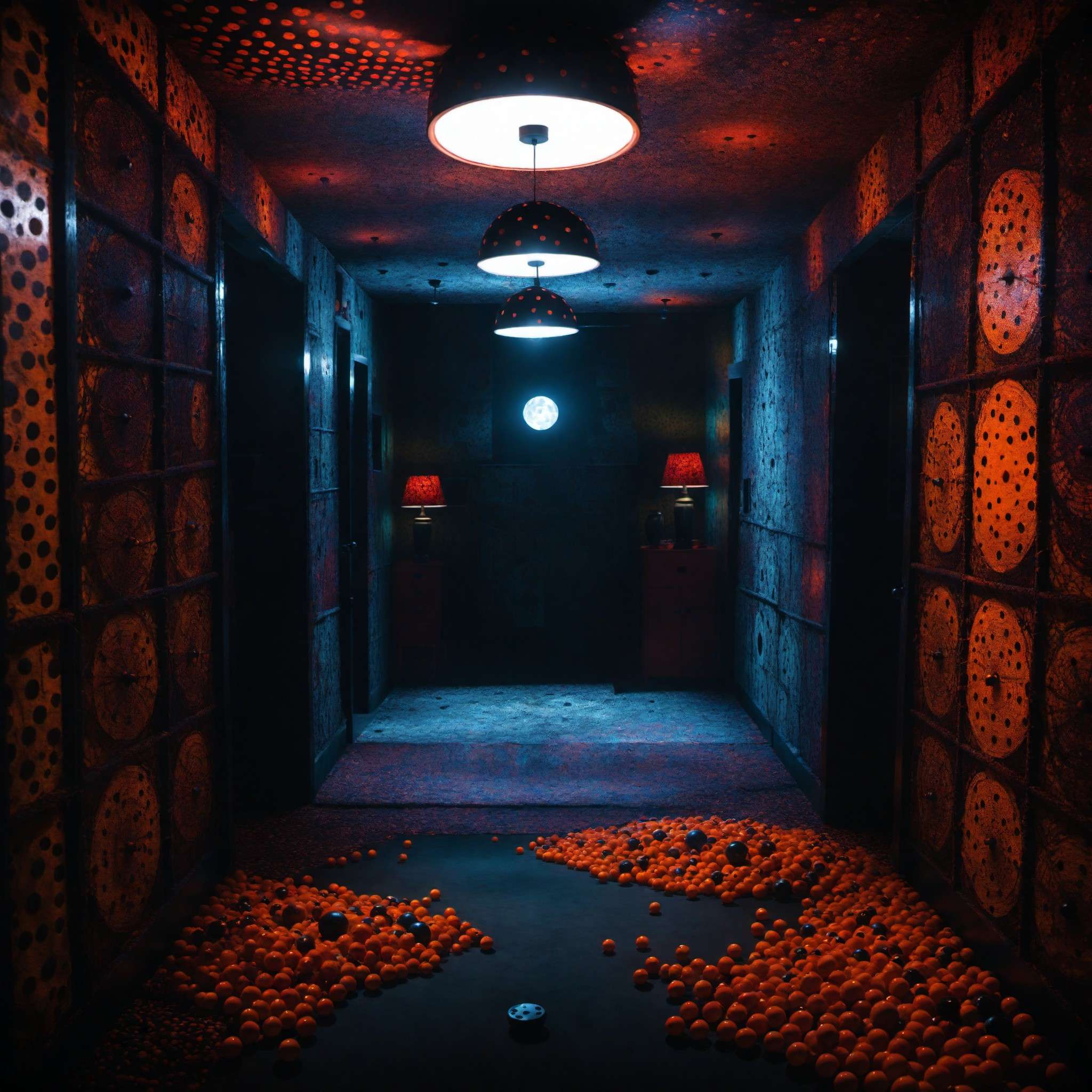
The Science Behind the Excitement: The Basement LA’s Escape Room
Discover the thrilling experience of The Basement LA, one of the best escape rooms in Los Angeles, offering Hollywood-style suspense and mystery.
Immerse yourself in the thrilling world of The Basement LA, one of Los Angeles’ top-rated escape rooms. Experience the spine-chilling narrative, solve intelligent puzzles, and test your teamwork skills in a race against time to escape the eerie world of serial killer Edward Tandy. This engaging and suspenseful game goes beyond the ordinary escape room, offering a Hollywood-style suspense that taps into your primal fears and survival instincts. Discover why escape rooms have taken the world by storm and why The Basement LA stands out for its exceptional design, immersive storytelling, and adrenaline-fueled excitement. Embrace the thrill of escape rooms at The Basement LA – your adventure awaits!
Introduction: The Thrill of The Basement LA

© Copyright , ZombieBunny.Org
Introduction to The Basement LA’s Escape Room
Have you ever wondered what it’s like to be in a thrilling movie scenario? The Basement LA’s Escape Room offers just that – a heart-pounding, mind-boggling experience that’s as close as you can get to Hollywood-style suspense and mystery. This immersive game is more than just an escape room; it’s a narrative-driven adventure that will challenge your problem-solving abilities and teamwork skills in the most exciting way possible.
As one of the top-rated escape rooms in Los Angeles, The Basement LA takes you into the eerie world of serial killer Edward Tandy. Your mission? Escape from his basement before you become his next victim. With its meticulously designed sets, intelligent puzzles, and spine-chilling storyline, The Basement LA goes beyond the ordinary escape game. It’s an engaging, immersive experience that taps into your primal fears and survival instincts. Get ready to step into a thrilling adventure where every second counts, and each decision can be a matter of life or death. So, are you ready to take on the challenge at The Basement LA? The door is waiting, but once it shuts, there’s no turning back.
The allure of escape rooms
Escape rooms have taken the world by storm, and it’s easy to understand why. They offer a unique blend of entertainment, challenge, and excitement that’s hard to find in other activities. More than just games, escape rooms are immersive experiences that transport you into different worlds and situations, from haunted houses and alien spaceships to ancient temples and detective stories. They engage your senses, test your wits, and get your adrenaline pumping.
But what makes escape rooms truly irresistible is their ability to tap into our basic human instincts and desires. They challenge us to solve complex problems, think creatively, and work as a team – skills that our ancestors needed for survival and that we still find fulfilling today. Escape rooms also satisfy our craving for novelty and excitement. Each room is a new adventure, a mystery to unravel, a story to unfold. They allow us to experience the thrill of danger and the joy of victory in a safe and controlled environment. It’s this unique combination of challenge, excitement, and fulfillment that gives escape rooms their universal appeal. Whether you’re a puzzle enthusiast, a thrill-seeker, or just someone looking for a fun and unique way to spend an hour, escape rooms have something to offer you. And among the many options out there, The Basement LA stands out for its exceptional design, immersive storytelling, and intense excitement.
The role of science in the excitement
Science plays a crucial role in the excitement we experience in escape rooms like The Basement LA. At first glance, escape rooms may seem all about fun and games, but there’s a whole lot of science underpinning the thrill. From the adrenaline that pumps through your veins as the countdown clock ticks, to the euphoria that washes over when you finally crack a challenging puzzle, it’s all thanks to the fascinating interplay of psychology, biology, and even physics.
Psychologically, escape rooms tap into our innate curiosity and desire for accomplishment. They present us with a series of challenges that require creativity, logic, and teamwork to solve – all things our brains are wired to enjoy. Biologically, when we are faced with high-stress situations, our bodies produce adrenaline, a hormone that heightens our senses, quickens our reactions, and fuels our excitement. There’s also the concept of ‘flow’, a state of hyper-focus and enjoyment that we enter when we’re fully engaged in a challenging and rewarding activity, like solving puzzles in an escape room.
Moreover, physics comes into play in the design of many escape room puzzles. From hidden magnets and optical illusions to clever uses of light and sound, a deep understanding of scientific principles can make the difference between a good escape room and a great one. So, the next time you’re feeling the thrill in an escape room, remember – it’s science that’s making your heart race!
Understanding the Psychology Behind Escape Rooms

© Copyright , ZombieBunny.Org
The role of challenge and problem solving
Escape rooms like The Basement LA offer a unique amalgamation of challenges and problem-solving opportunities that make them a magnet for thrill-seekers and puzzle enthusiasts alike. The intrigue lies in their ability to stimulate our cognitive abilities while providing a real sense of risk and reward. But why are we so drawn to these challenges, and what makes problem-solving so satisfying?
The answer lies in our brains. When we solve a problem, our brains release a surge of dopamine, a neurotransmitter associated with pleasure and reward. This is why cracking a complex puzzle or finding a solution to a difficult problem feels so satisfying. This dopamine-driven reward system is an evolutionary adaptation that encourages learning and problem-solving, essential skills for our survival.
Escape rooms amplify this satisfaction by adding elements of time pressure, teamwork, and narrative. The time limit creates a sense of urgency that heightens the thrill of problem-solving. Teamwork adds a social dimension, enhancing the satisfaction we get from mutual success. The narrative provides a context that makes the challenges more engaging and the solutions more meaningful.
In essence, escape rooms are dopamine factories, designed to keep us excited, engaged and ultimately satisfied. The puzzles challenge our logical reasoning, pattern recognition, and creative thinking, pushing us to use our brains in ways that few other activities do. So, if you’re looking for a fun way to give your brain a workout, escape rooms might just be the perfect fit.
The adrenaline factor
Ever wondered why your heart races when you enter an escape room like The Basement LA, or why you feel a jolt of excitement when the countdown begins? That’s adrenaline at work. Adrenaline, also known as epinephrine, is a hormone that our bodies produce in response to stress, fear, or excitement. It’s part of our body’s ‘fight-or-flight’ response, a survival mechanism evolved to help us react quickly in dangerous situations.
In an escape room, the eerie atmosphere, the ticking clock, and the looming threat of ‘failure’ all trigger the release of adrenaline. This gives you heightened senses, faster reactions, and a laser-like focus on the task at hand – all things that come in handy when you’re trying to escape from a serial killer’s basement!
But adrenaline does more than just enhance performance. It also intensifies emotions, making every puzzle solved, every clue found, and every minute saved feel like a major victory. This is why escape rooms are so thrilling and memorable, even though we know they’re just games. The adrenaline makes the experience feel real and important, turning an hour of puzzle-solving into a rollercoaster ride of excitement.
So, if you’re a fan of adrenaline-fueled adventures, escape rooms are just the ticket. They provide the thrill and excitement of a high-stakes adventure, with none of the actual danger – all thanks to the magic of adrenaline.
Group dynamics in escape rooms
Escape rooms are not only about personal skills and abilities, but also about group dynamics. The Basement LA, like many escape rooms, is designed for teams and encourages cooperative gameplay. The experiences are structured in a way that it’s almost impossible for a single player to solve all puzzles alone within the time limit. This pushes players to work together, dividing tasks according to their strengths and collaborating to solve problems.
The way a group interacts and communicates in an escape room can be fascinating. Some people naturally take on leadership roles, guiding the team and making decisions when necessary. Others may excel in specific tasks, like searching for hidden clues or solving complex puzzles. Many teams find that they must adjust their communication styles and decision-making processes to succeed, which can lead to valuable insights about teamwork and collaboration.
Escape rooms also reveal how groups handle stress and conflict. Under the pressure of the ticking clock, even minor disagreements can escalate, and it’s in these moments that effective communication and conflict resolution become crucial. On the other hand, successfully navigating these challenges can strengthen group bonds and lead to a more satisfying victory.
In short, escape rooms offer a microcosm of group dynamics, providing a platform for groups to practice and explore cooperation, leadership, communication, and conflict resolution. Whether for team building or just for fun, they offer a unique and engaging way to understand and improve how we work together.
Unlocking the Mystery: The Role of Puzzles and Clues
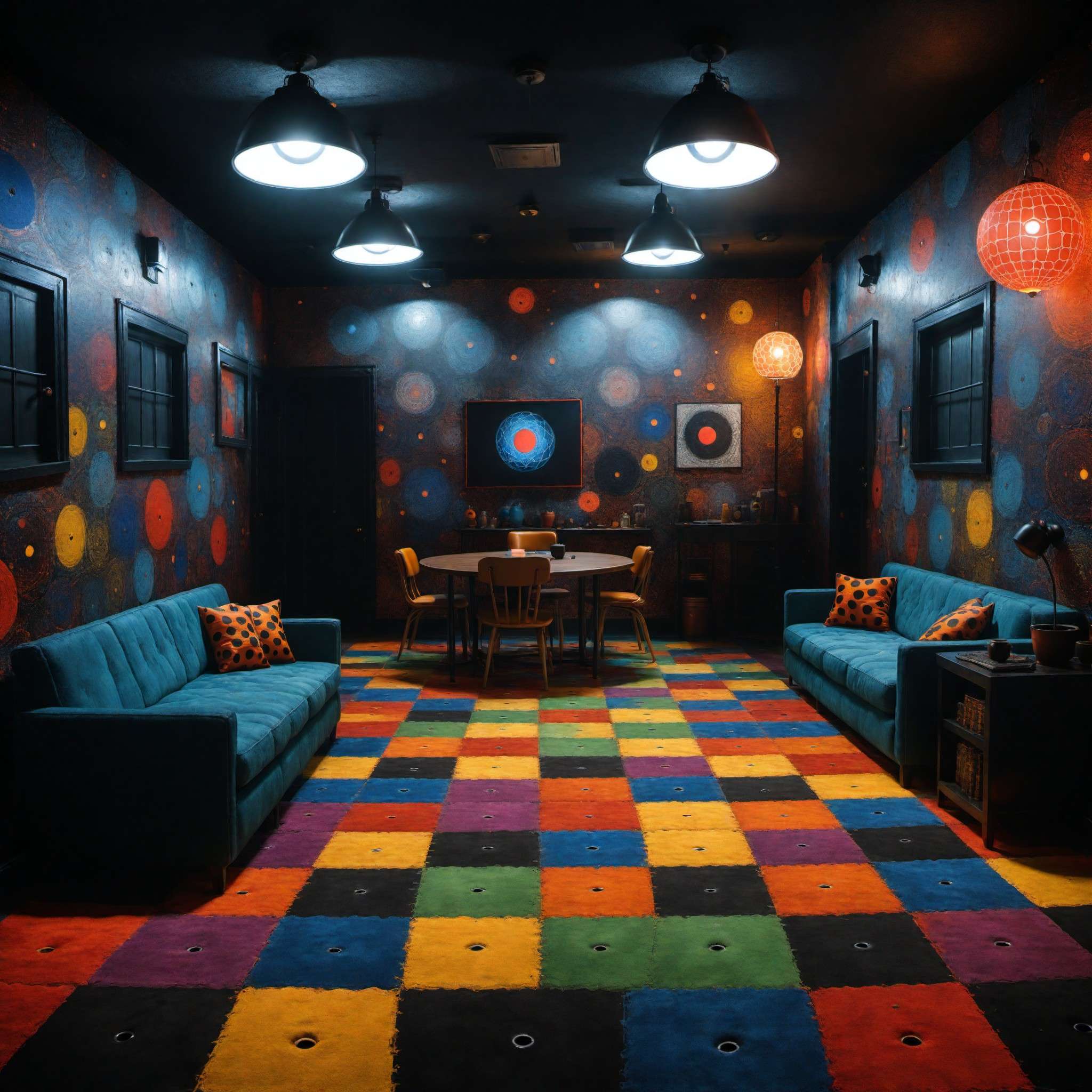
© Copyright , ZombieBunny.Org
Why puzzles and clues matter
Puzzles and clues are the lifeblood of any escape room, and The Basement LA is no exception. They provide the framework around which the game is built, driving the narrative, challenging the players, and often determining the overall experience. But why do they matter so much, and what makes them so engaging?
The answer lies in our innate curiosity and desire for problem-solving. Puzzles and clues tap into these instincts, presenting us with mysteries to unravel and problems to solve. They challenge our cognitive abilities, forcing us to think creatively, reason logically, and pay attention to details. Solving a puzzle or finding a clue gives us a sense of achievement and satisfaction, stimulating the release of dopamine, a neurotransmitter associated with pleasure and reward.
Furthermore, puzzles and clues add depth and immersion to the escape room experience. They are often woven into the game’s narrative, providing context and meaning to our actions. Solving a puzzle isn’t just about cracking a code or finding a hidden object; it’s about advancing the story, overcoming obstacles, and getting one step closer to escape.
In addition, puzzles and clues encourage teamwork and cooperation. They often require a variety of skills and perspectives to solve, forcing players to collaborate and divide tasks according to their strengths. This not only adds a social dimension to the game but also enhances the sense of shared achievement and camaraderie. So, the next time you’re in an escape room, remember: every puzzle solved, every clue found, is a victory in itself.
Cognitive skills required in escape rooms
Escape rooms, including The Basement LA, are not just about fun and excitement; they are also a test of various cognitive skills. The puzzles and challenges presented in these rooms require players to utilize a wide range of mental abilities, making the experience both stimulating and rewarding.
One of the primary skills tested in escape rooms is problem-solving. This involves both analytical thinking, where you break down complex problems into simpler components, and creative thinking, where you come up with innovative solutions. For instance, you may need to decipher a code, devise a strategy, or think outside the box to interpret a clue.
Another critical skill is attention to detail. Escape rooms often hide clues in plain sight or incorporate subtle hints into their design. Spotting these details can make the difference between escape and ‘capture’.
Memory also plays a crucial role. You may need to remember a sequence of symbols, recall a clue from earlier in the game, or keep track of which puzzles you’ve already solved.
Finally, escape rooms also test your spatial reasoning ability. You may need to navigate a maze, arrange objects in a specific pattern, or understand a map.
All these cognitive challenges make escape rooms engaging and satisfying. They provide a mental workout that can help improve these skills over time. So, the next time you escape from a room, take a moment to appreciate the cognitive gymnastics you just performed. It’s not just a game, it’s a brain-boosting activity!
Teamwork in solving puzzles
The essence of escape rooms, like The Basement LA, is teamwork. They are designed in a way that teamwork isn’t just beneficial, it’s essential. The puzzles and challenges are often too complex for a single person to solve within the time limit. This necessitates a division of labor, where team members take on different tasks based on their skills and strengths.
Teamwork in an escape room involves more than just splitting tasks, though. It requires efficient communication, as team members need to share information, discuss solutions, and coordinate their actions. It also requires effective decision-making, as teams often need to make quick decisions under pressure.
Furthermore, teamwork in escape rooms involves managing resources. Teams must decide how to best use their time, which puzzles to tackle first, and who should do what. They also need to manage their physical resources, like tools and clues, and ensure they’re not overlooked or forgotten.
Finally, and perhaps most importantly, teamwork in escape rooms involves trust. Team members need to trust each other’s abilities, listen to each other’s ideas, and support each other through the challenges.
In the end, the success of a team in an escape room is determined not so much by the individual skills of its members, but by how well they work together. It’s a testament to the old adage: “Together, we’re stronger.” So, if you want to win at escape rooms, remember – teamwork makes the dream work!
Adrenaline Rush: The Science of Excitement and Fear
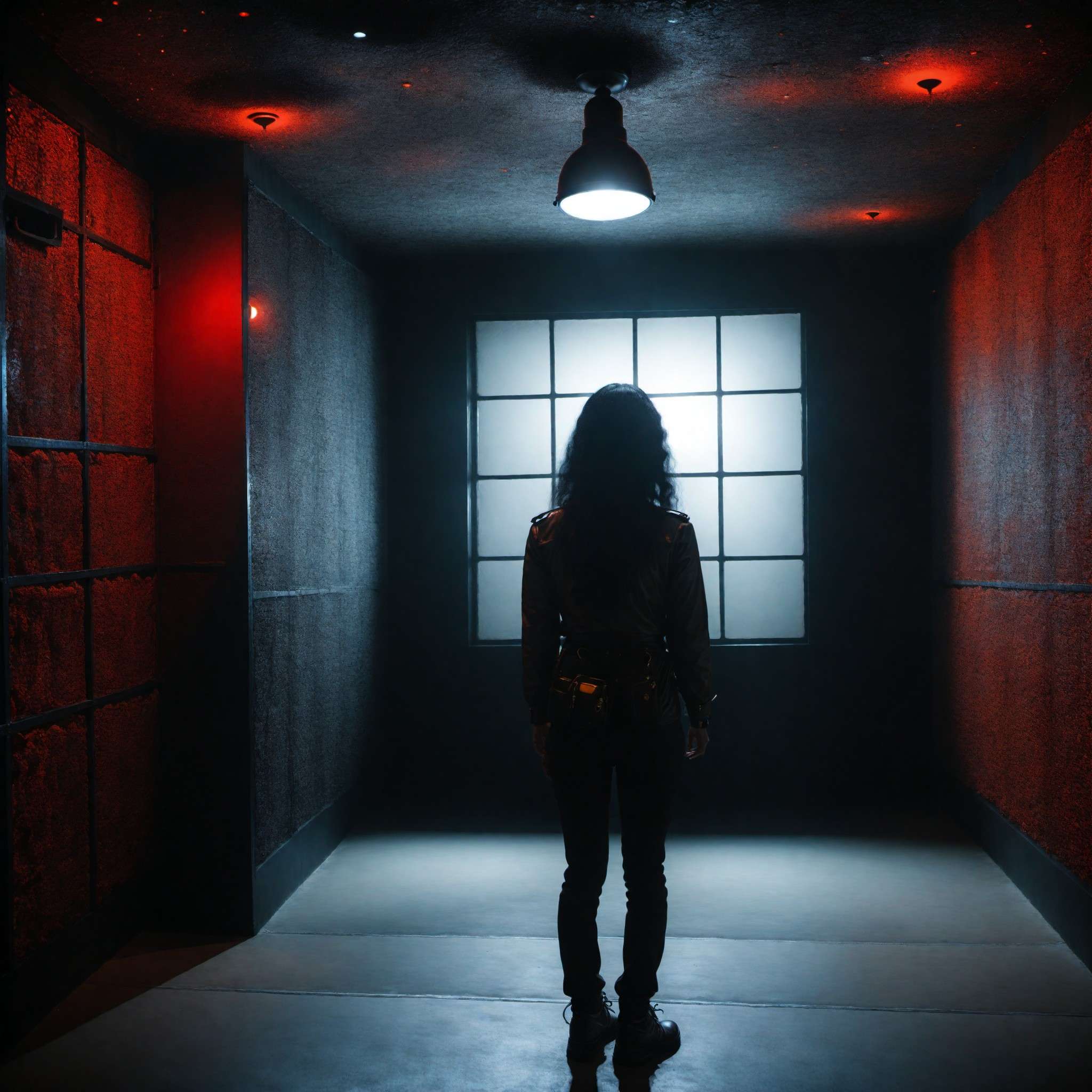
© Copyright , ZombieBunny.Org
What happens when adrenaline kicks in?
Adrenaline, also known as the ‘fight or flight’ hormone, is a crucial player in the excitement we experience in escape rooms like The Basement LA. When you’re locked in a room with a countdown clock ticking and a series of puzzles to solve, your body perceives this as a stressful situation and responds by releasing adrenaline.
When adrenaline kicks in, several physiological changes occur to prepare your body for action. Your heart rate increases to pump more blood to your muscles, your breathing becomes faster to supply more oxygen, and your senses become sharper. You might notice that your vision becomes clearer, your hearing becomes more acute, and you become more aware of your surroundings. These changes are designed to improve your physical performance, allowing you to react quickly and effectively to the situation at hand.
At the same time, adrenaline stimulates the release of glucose and fatty acids into the bloodstream, providing a burst of energy. This is why you might feel a rush of energy or a sense of heightened alertness when the adrenaline kicks in.
Interestingly, adrenaline also plays a role in memory formation. It helps encode emotionally charged experiences into long-term memory, making them easier to recall later. This is why you might have vivid memories of your escape room adventures!
In short, adrenaline is your body’s natural performance enhancer, designed to help you tackle challenges, react to threats, and make lasting memories. It’s a key part of the thrill and excitement of escape rooms.
The science of fear and excitement
The thrilling sensations we experience in escape rooms like The Basement LA stem from a complex interplay of fear and excitement, two emotions closely linked in our brain’s wiring. Both emotions trigger similar physiological responses, including the release of adrenaline. This mechanism, part of our primal ‘fight-or-flight’ response, prepares our body to react to perceived threats or challenges.
The science behind this is fascinating. The amygdala, an almond-shaped structure in our brain, plays a crucial role in processing emotions, including fear and excitement. When we encounter something scary or exciting, the amygdala triggers the release of adrenaline and other stress hormones. This leads to increased heart rate, rapid breathing, and heightened alertness – the physical manifestations of fear and excitement.
Interestingly, our brain often has trouble distinguishing between these two emotions. A study published in the Journal of Neuroscience found that the brain’s neural circuits associated with fear and excitement are remarkably similar. This might explain why we often feel a mix of fear and excitement in thrilling situations, like playing an escape room game.
However, while fear usually triggers a desire to escape or avoid the situation, excitement encourages us to engage and explore. This is where the thrill of escape rooms lies – they provide a safe environment where we can experience and harness our fear, turning it into a source of enjoyment and satisfaction. The result? A heart-racing, adrenaline-fueled adventure that’s both exciting and fearfully fun!
Risk taking in escape rooms
Escape rooms like The Basement LA often encourage a degree of risk-taking. Whether it’s trying a bold solution to a puzzle, venturing into a creepy corridor, or making a decision under time pressure, players are frequently faced with situations where they need to take risks. But what drives us to take risks in escape rooms, and why is it part of the thrill?
The adrenaline rush we experience in exciting or stressful situations might be a key factor. Adrenaline, as part of our ‘fight-or-flight’ response, not only enhances our physical performance but also influences our decision-making process. It can make us more impulsive and more willing to take risks, especially when we perceive the potential rewards to be high. This is why, under the influence of adrenaline, we might decide to try a daring strategy or make a leap of logic in an escape room.
Risk-taking in escape rooms is part of the fun because it adds an element of uncertainty and unpredictability to the experience. It heightens the stakes, making success feel even sweeter and failure a learning opportunity. Importantly, escape rooms provide a safe environment for risk-taking, where the potential ‘losses’ are usually just a few minutes of time.
In essence, risk-taking is an integral part of the escape room experience. It adds intensity to the challenges, variety to the gameplay, and satisfaction to the victories, contributing to the overall thrill of the game.
The Social Bond: Team Dynamics and Cooperation
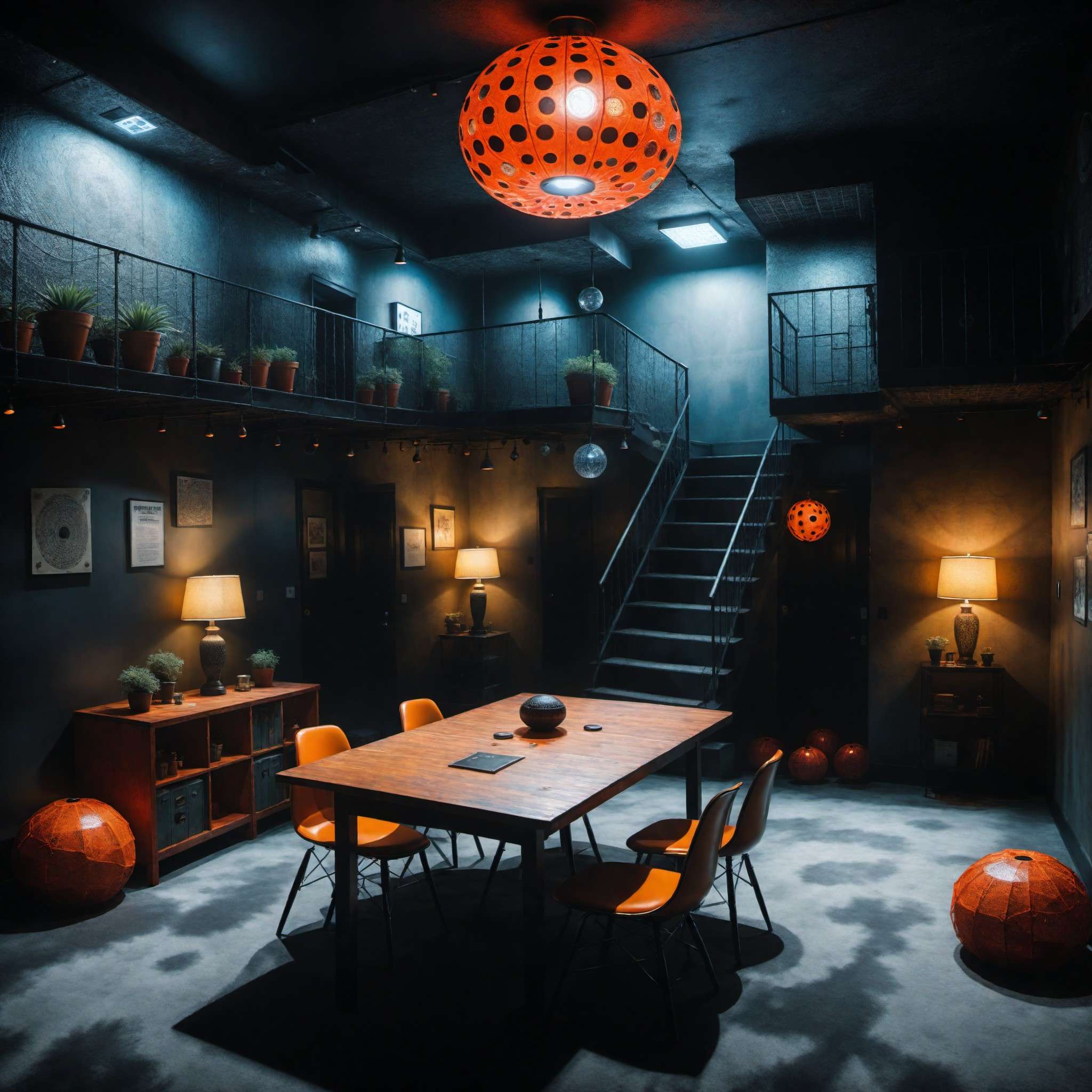
© Copyright , ZombieBunny.Org
The importance of cooperation in escape rooms
Escape rooms like The Basement LA are, at their heart, a test of cooperation. The puzzles and challenges are designed in such a way that they are nearly impossible to solve alone within the given time limit. Success, therefore, relies heavily on the ability of the team to work together effectively.
Cooperation in an escape room involves clear communication, efficient division of tasks, and mutual support. Team members need to share information about the clues they find, discuss potential solutions, and coordinate their actions. They also need to divide tasks according to their skills and strengths, ensuring that everyone is contributing to the team’s progress.
Moreover, cooperation in escape rooms extends beyond just problem-solving. It also involves managing the team’s dynamics under pressure. How does the team deal with disagreements? How do they keep morale high when they’re stuck on a puzzle? How do they celebrate their successes and learn from their failures? These are all aspects of cooperation that can make or break the team’s performance.
In essence, escape rooms are a cooperative endeavor. They provide a platform for groups to practice and enhance their teamwork skills in a fun and engaging way. The ability to cooperate effectively not only increases your chances of escaping the room, but also leads to a more enjoyable and rewarding experience. So, if you’re planning to tackle an escape room, remember: cooperation is key!
Leadership and roles within a team
Escape rooms like The Basement LA offer a unique setting for observing and understanding leadership and team roles. The time pressure, immersive environment, and complex tasks create a situation where leadership and defined roles can significantly impact the team’s performance and overall experience.
Leadership in an escape room can take many forms. Some teams may have a clear leader who guides the group’s strategy, makes decisions, and ensures everyone stays on task. Others may adopt a more democratic approach, where decisions are made collectively, and leadership roles are fluid. Regardless of the style, effective leadership often involves clear communication, constructive feedback, and the ability to keep the team focused and motivated.
As for roles within the team, it’s common for members to naturally gravitate towards tasks that match their skills and interests. Some might excel at solving puzzles, while others might be good at searching for clues or managing time. Recognizing and harnessing these strengths can lead to a more efficient and successful team.
Interestingly, escape rooms can also reveal hidden leadership qualities and skills among team members. Someone who is usually quiet might step up to guide the team, or someone who typically takes a backseat might demonstrate a knack for problem-solving.
In short, escape rooms provide a valuable opportunity for teams to explore and understand leadership and team roles. They create a space where these dynamics can be observed, practiced, and improved in a fun and engaging way.
Conflict resolution in high-stress situations
Escape rooms like The Basement LA, with their time pressure and challenging tasks, are a hotbed for conflict. Differences in opinion, stress-induced irritability, or simple misunderstandings can quickly escalate into conflicts. However, these high-stress situations also provide an excellent opportunity to practice and understand conflict resolution.
Conflict resolution in an escape room often requires clear and effective communication. Team members need to express their ideas and concerns assertively but respectfully, listen to each other’s perspectives, and work towards a mutually satisfying solution. This can involve negotiation, compromise, or even agreeing to disagree for the sake of the team’s progress.
Another key aspect of conflict resolution in escape rooms is emotional regulation. High-stress situations can heighten emotions, making conflicts more intense and harder to resolve. Being able to manage your own emotions and respond calmly to others’ emotions can prevent conflicts from spiraling out of control and keep the team focused on their goal.
Finally, conflict resolution in escape rooms often requires a willingness to put the team’s needs above individual preferences. This might mean stepping back from a puzzle to let someone else try, or accepting a strategy that you’re not fully convinced about.
In essence, escape rooms provide a microcosm of real-life conflict situations, offering a platform to practice and enhance conflict resolution skills. The ability to navigate conflicts effectively not only improves the team’s success rate but also contributes to a more enjoyable and enriching experience.
The Art of Designing an Escape Room

© Copyright , ZombieBunny.Org
The design process of an escape room
Designing an escape room like The Basement LA is a complex process that combines elements of game design, storytelling, interior design, and even psychology. The goal is to create an immersive and challenging experience that players will find engaging and memorable.
The design process often starts with the theme and narrative. The designers decide on the setting, the storyline, and the characters that will set the tone for the experience. The theme and narrative not only provide context for the puzzles and challenges but also enhance the immersion and emotional engagement of the players.
Next, the designers create the puzzles and challenges. These need to be challenging but solvable, and varied enough to keep players engaged. The puzzles are often designed to require a mix of skills and abilities, encouraging teamwork and cooperation. They are also woven into the narrative, adding depth and meaning to the gameplay.
The physical design of the room is another crucial aspect. The room needs to be laid out in a way that facilitates gameplay and enhances immersion. This involves careful consideration of things like lighting, sound, props, and decor.
Finally, the designers test and refine the room. This involves playing the game multiple times, tweaking the puzzles and layout, and gathering feedback from test players. This iterative process ensures that the final product is polished, balanced, and fun to play.
In essence, designing an escape room is a blend of art and science, requiring creativity, technical skill, and a deep understanding of human behavior. It’s a meticulous process, but the result is a unique and captivating experience that players won’t soon forget.
Creating immersive experiences
Creating immersive experiences is a key objective in the design of escape rooms like The Basement LA. Immersion is the sense of being ‘in’ the game, of being transported to a different world where the puzzles, the environment, and the narrative all feel real and important. Achieving this level of immersion requires careful consideration of several factors.
Firstly, the narrative and theme play a crucial role. A compelling story and a cohesive theme can draw players in, making them feel part of the game world. The narrative provides context and motivation for the players, adding depth and meaning to their actions.
Secondly, the physical design of the room contributes significantly to immersion. Attention to detail is key. Every prop, sound effect, and piece of decor should support the theme and narrative. The use of technology can also enhance immersion, with things like lighting effects, soundscapes, and interactive elements adding to the realism of the experience.
Finally, the challenges and puzzles themselves need to be immersive. They should be integrated into the narrative and the environment, rather than feeling like arbitrary tasks. They should also require a range of skills and abilities, engaging different aspects of the players’ cognition and senses.
Creating immersive experiences in escape rooms is both an art and a science. It involves a deep understanding of storytelling, game design, and human psychology. But the payoff is worth it – a truly immersive escape room can provide a thrilling, memorable, and uniquely satisfying experience.
The role of surprise elements
Surprise elements play an essential role in enhancing the excitement and engagement in escape rooms like The Basement LA. These elements, which can range from unexpected puzzles and hidden clues to sudden plot twists and atmospheric effects, add an element of unpredictability to the experience, keeping players on their toes and heightening the sense of adventure.
Surprises work by disrupting our expectations, forcing us to adapt and react to new information or circumstances. This not only keeps the gameplay fresh and interesting but also stimulates our brain’s reward system. When we encounter a surprise, our brain releases dopamine, a neurotransmitter associated with pleasure and learning. This makes surprises not just exciting, but also satisfying and memorable.
Furthermore, surprises can enhance the narrative and immersion of the escape room. A well-timed plot twist or a cleverly hidden clue can deepen the story, making players feel more involved and invested in the game. They can also heighten the sense of discovery and exploration, adding to the overall enjoyment of the experience.
However, designing surprise elements requires skill and finesse. Too many surprises can be disorienting or frustrating, while too few can make the game predictable and dull. The key is finding the right balance, ensuring each surprise adds to the excitement and challenge without overwhelming the players.
In essence, surprise elements are a vital tool in the escape room designer’s toolkit, adding a touch of the unexpected to the thrill of the escape.
The Basement LA: A Case Study
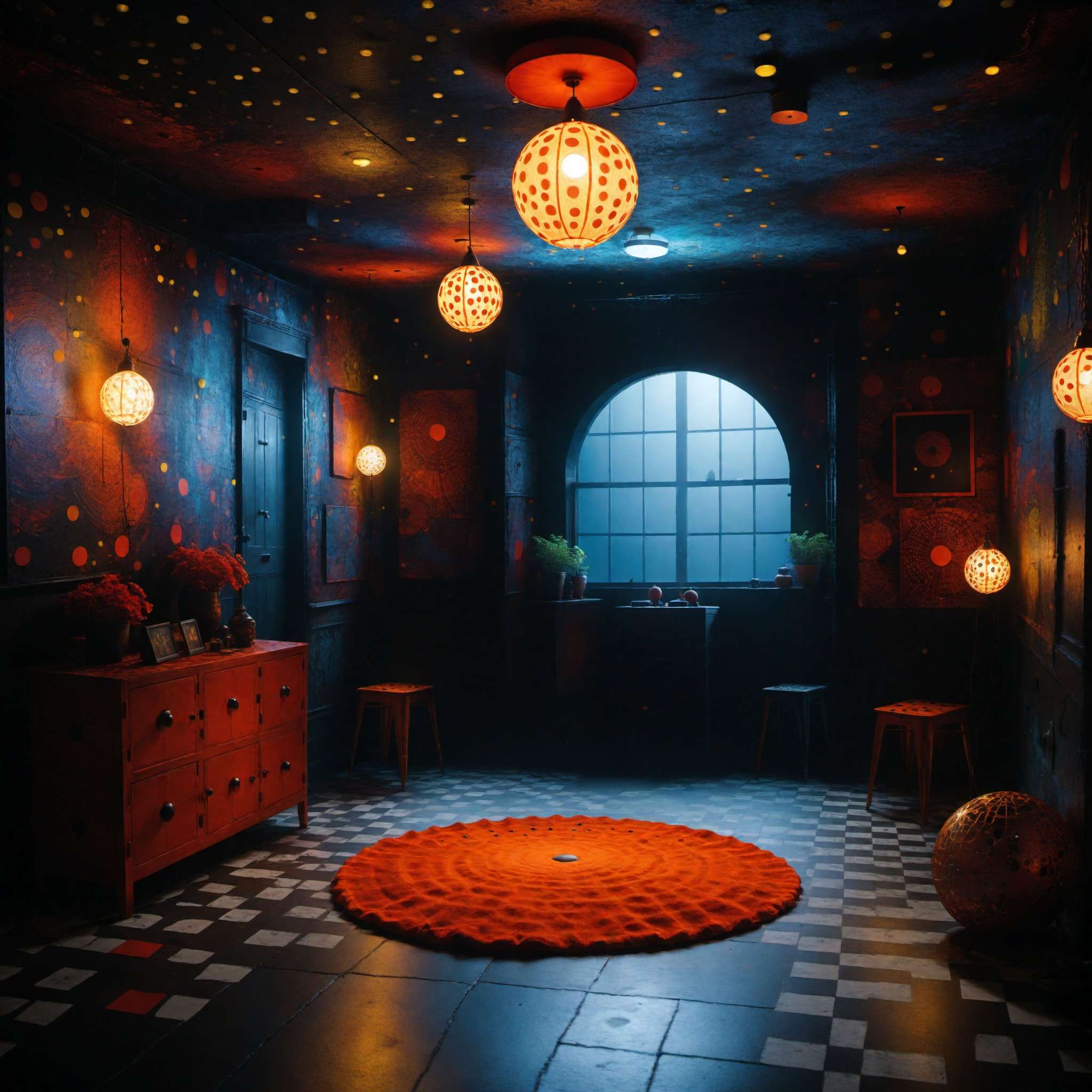
© Copyright , ZombieBunny.Org
Overview of The Basement LA
The Basement LA is an acclaimed escape room venue located in Los Angeles, California. Known for its immersive experiences and intricate puzzle designs, it has become a go-to destination for thrill-seekers and puzzle enthusiasts alike.
The Basement LA sets itself apart with its unique and chilling theme. Billed as ‘A Live Escape Room Experience,’ it places participants in the basement of a cannibalistic serial killer, Edward Tandy. Trapped and with time running out, players must work together to solve a series of puzzles and escape before they become Tandy’s next victims.
The game design of The Basement LA is a masterclass in immersion and suspense. Every puzzle, prop, and sound effect is meticulously designed to enhance the eerie atmosphere and build tension throughout the experience. The game also incorporates surprise elements to keep players on their toes, adding to the unpredictability and excitement.
Furthermore, The Basement LA places a strong emphasis on teamwork and cooperation. The challenges are designed to be too complex for a single player to solve within the time limit, promoting division of labor, communication, and collective decision-making.
Finally, The Basement LA’s commitment to providing a thrilling and memorable experience extends beyond the game itself. The venue offers a fully immersive experience, with professional actors, detailed set designs, and a captivating backstory that unfolds over multiple games.
In essence, The Basement LA is a prime example of what makes escape rooms so exciting and engaging. It combines the thrill of suspense, the satisfaction of problem-solving, and the joy of teamwork into one adrenaline-fueled adventure.
The puzzles and themes of The Basement LA
The Basement LA’s escape room experience is renowned for its creative puzzles and immersive themes. Each game is meticulously designed to challenge players’ problem-solving skills, attention to detail, and teamwork, all while immersing them in a riveting narrative.
The puzzles in The Basement LA are varied and intricate, requiring a mix of logic, creativity, and physical interaction. They range from deciphering codes and finding hidden objects to operating complex mechanisms and solving riddles. Each puzzle is cleverly integrated into the narrative and the physical environment, enhancing the immersion and making the challenges feel meaningful.
The theme of The Basement LA is one of its standout features. The narrative revolves around the twisted world of Edward Tandy, a cannibalistic serial killer, adding a layer of suspense and horror to the experience. The physical design of the room reinforces this theme, with eerie decor, atmospheric lighting, and sound effects that create a sense of dread and anticipation.
Moreover, The Basement LA incorporates surprise elements into its games. Unexpected plot twists, hidden clues, and sudden changes in the environment keep players on their toes, adding to the thrill and unpredictability of the experience.
In essence, the puzzles and themes of The Basement LA are carefully crafted to provide a heart-pounding, brain-teasing adventure. They test your wits, stimulate your senses, and take you on a wild ride through a world of suspense and horror. Whether you’re an escape room veteran or a first-time player, The Basement LA promises an unforgettable experience.
The excitement factor at The Basement LA
The excitement factor at The Basement LA is undeniable. From the minute players step into the escape room, they are plunged into a thrilling and suspense-filled narrative that keeps them on the edge of their seats. But what exactly makes The Basement LA so exciting?
Firstly, the horror theme and immersive storytelling are key factors. Players aren’t just solving puzzles; they’re trying to escape a horrifying fate at the hands of a cannibalistic serial killer. This narrative adds an element of danger and urgency that heightens the excitement and keeps players fully engaged.
Secondly, the puzzles themselves are designed to be challenging and varied. Each puzzle solved is a step closer to escape, creating a sense of progression and achievement that builds anticipation and excitement. The inclusion of surprise elements adds an additional layer of unpredictability, keeping players on their toes.
The time pressure is another crucial factor. With only a limited time to escape, every second counts, adding a sense of urgency and tension that keeps the adrenaline flowing.
Finally, the social aspect of the game enhances the excitement. Working together as a team, overcoming challenges, and sharing the thrill of escape all contribute to a sense of camaraderie and shared excitement.
In short, The Basement LA combines immersive storytelling, challenging puzzles, time pressure, and social interaction to create a truly exciting experience. It’s a heart-racing, adrenaline-fueled adventure that keeps players coming back for more.
Revolutionizing Entertainment: The Future of Escape Rooms
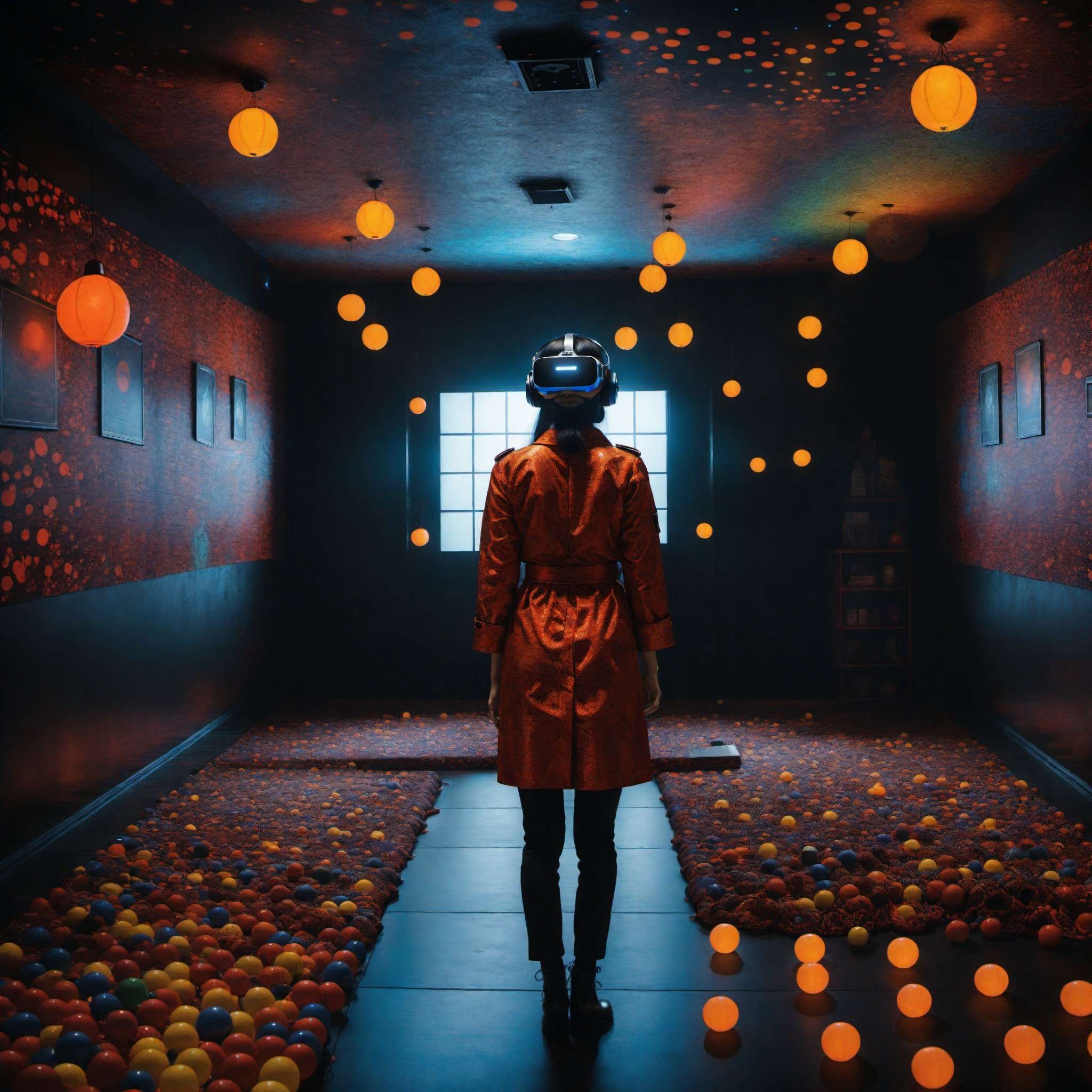
© Copyright , ZombieBunny.Org
The use of technology in escape rooms
Technology is increasingly shaping the future of escape rooms, introducing new dimensions of interaction and narrative engagement. Escape rooms like The Basement LA are leveraging the power of technology to enhance the game experience, creating immersive environments that captivate players’ senses and imagination.
One of the most notable uses of technology in escape rooms is in the creation of immersive environments. Advanced lighting systems, sound effects, and projection technologies can be used to simulate different settings, times, and atmospheres, enhancing the room’s theme and narrative. For instance, projection mapping can transform a simple room into a haunted mansion, an alien spaceship, or an ancient temple, all at the flick of a switch.
Additionally, technology enables the use of interactive elements in escape rooms. Touch screens, motion sensors, and augmented reality (AR) can make puzzles more dynamic and engaging. For example, players might need to interact with a digital interface to solve a puzzle or use an AR app to reveal hidden clues.
Finally, technology can also enhance the management and operation of escape rooms. Automated systems can monitor the game progress, provide hints when needed, and reset the room after each game.
In essence, technology is revolutionizing the escape room industry, creating new possibilities for immersive storytelling, interactive gameplay, and efficient operations. As technology continues to evolve, we can expect to see even more innovative and thrilling escape room experiences in the future.
The future of immersive storytelling
Immersive storytelling is at the heart of the escape room experience, and as the industry evolves, so too does the narrative complexity and immersive potential of these games. The future of immersive storytelling in escape rooms promises even more engaging and innovative experiences, fueled by advances in technology and a deeper understanding of player behavior.
One of the key trends in immersive storytelling is the use of multi-sensory experiences. By engaging multiple senses – sight, sound, touch, and even smell – escape rooms can create more realistic and immersive environments. This could be achieved through advanced audio-visual systems, tactile puzzles, or even scent machines that add a new layer of realism to the game environment.
Another trend is the use of personalized narratives. By integrating player data or decisions into the narrative, escape rooms can create unique and personalized experiences that increase player engagement and emotional investment. For example, the game could adapt to the players’ actions, creating different story outcomes based on their decisions.
Finally, the use of virtual reality (VR) and augmented reality (AR) in immersive storytelling holds great potential. By blending the physical and digital worlds, these technologies can create hyper-immersive environments and interactive narratives that were previously unimaginable.
In essence, the future of immersive storytelling in escape rooms promises to be more engaging, more personal, and more immersive than ever. As storytellers and game designers harness the power of technology and creativity, players can look forward to increasingly captivating and memorable escape room adventures.
Innovations in player engagement
Engaging players is a key objective for any escape room, and as the industry evolves, so too do the methods for achieving this. Innovative approaches to player engagement are transforming the escape room experience, making it more interactive, personalized, and immersive.
One of the most prominent innovations in player engagement is the use of technology. Interactive elements, augmented reality (AR), and virtual reality (VR) can make the gameplay more dynamic and engaging, offering new ways for players to interact with the game environment and solve puzzles. For instance, an AR app might allow players to see hidden clues or interact with virtual objects, adding a new layer of intrigue to the game.
Another innovation is the use of personalized narratives. By incorporating player decisions into the game’s storyline, escape rooms can create a more engaging and immersive experience. Players become active participants in the narrative, their actions and choices shaping the course of the story.
Finally, social engagement is becoming increasingly important in escape rooms. Leaderboards, social media integrations, and post-game debriefs encourage players to share their experiences, compete with others, and reflect on their performance. This not only extends the game experience beyond the escape room itself but also fosters a sense of community among players.
In essence, the future of player engagement in escape rooms is about creating experiences that are interactive, personalized, and social. As the industry continues to innovate, players can look forward to even more engaging and immersive escape room adventures.
The Science Unpacked: Key Takeaways
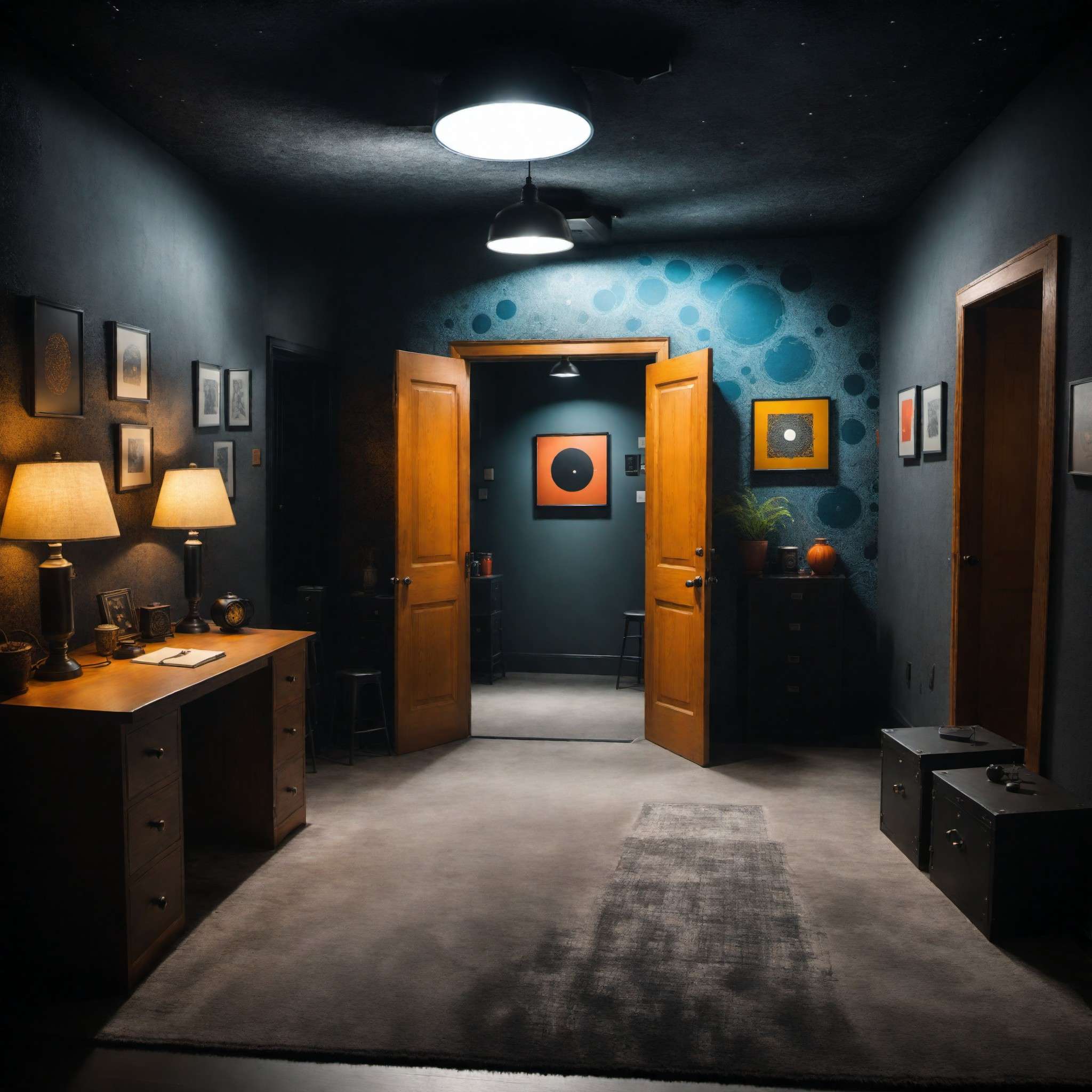
© Copyright , ZombieBunny.Org
The role of psychology in excitement
Psychology plays a pivotal role in the excitement we experience in escape rooms like The Basement LA. Understanding this can enhance our appreciation of these thrilling adventures and even help us perform better in them.
The thrill of escape rooms often stems from the ‘fight-or-flight’ response, a physiological reaction triggered by perceived threats or challenges. When faced with the time pressure and puzzles of an escape room, our bodies respond by releasing adrenaline. This hormone prepares our bodies for action, heightening our senses, increasing our heart rate, and sharpening our focus. This rush of adrenaline is a key part of the excitement we feel.
Another psychological aspect of the excitement is the ‘peak-end rule.’ According to this psychological principle, people judge experiences based on how they felt at their peak and at their end. Escape rooms tend to provide both a peak of excitement (when you solve a challenging puzzle or uncover a surprise) and a satisfying end (when you escape or run out of time), making them memorable and enjoyable experiences.
Finally, the satisfaction we derive from escape rooms is closely linked to the concept of ‘flow’ — a state of complete immersion in an activity. When we’re in the flow, we’re fully engaged, our skills are being challenged, and we lose track of time. This state is associated with enjoyment, creativity, and performance — all key aspects of the escape room experience.
In essence, understanding the psychology of excitement can enrich our escape room adventures, enhancing our enjoyment and performance. It’s a fascinating glimpse into why escape rooms are such a thrilling and satisfying pastime.
The importance of team dynamics
Team dynamics play a crucial role in the escape room experience. The way a team interacts, communicates, and works together can significantly impact their performance and their overall enjoyment of the game. Understanding the importance of team dynamics can enhance your escape room experience, whether you’re a first-time player or an escape room veteran.
Firstly, good communication is key. Sharing information, discussing strategies, and providing feedback are essential for solving puzzles and overcoming challenges. Effective communication can speed up your progress, prevent misunderstandings, and ensure everyone is on the same page.
Secondly, cooperation and division of labor can greatly enhance a team’s efficiency. Escape rooms often involve multiple puzzles that can be worked on simultaneously. By dividing tasks according to members’ strengths and interests, teams can cover more ground in less time.
Leadership also plays a role in team dynamics. A good leader can guide the team’s strategy, keep everyone focused, and manage conflicts. However, leadership in escape rooms is often fluid, with different members stepping up at different times.
Finally, how a team handles stress and setbacks can impact their performance and enjoyment. Teams that stay positive, support each other, and learn from their mistakes tend to have a more enjoyable experience, regardless of whether they escape or not.
In essence, team dynamics are a crucial aspect of the escape room experience. They can make the difference between success and failure, and between a fun, satisfying experience and a frustrating one. So, next time you’re in an escape room, remember: teamwork makes the dream work!
Innovation in escape room design
Innovation in escape room design is a key driver of the industry’s growth and popularity. New technologies, creative puzzles, and immersive storytelling techniques are continually pushing the boundaries of what an escape room can be. Understanding these innovations can give you a deeper appreciation of the escape room experience and get you excited about future trends.
One of the most significant innovations in escape room design is the use of technology. From advanced lighting and sound systems to augmented reality and interactive props, technology is enhancing the immersion and interactivity of escape rooms. It allows designers to create more realistic environments, more engaging puzzles, and more dynamic narratives.
Another area of innovation is the design of the puzzles themselves. Designers are continually finding new ways to challenge players, incorporating a wider range of skills and abilities, and integrating puzzles into the narrative and environment. This makes the gameplay more varied, engaging, and meaningful.
Finally, the use of immersive storytelling techniques is a major trend in escape room design. By weaving a compelling narrative into the game, designers can engage players on an emotional level and make the experience more memorable. This could involve a detailed backstory, plot twists, thematic puzzles, or even live actors.
In essence, innovation in escape room design is transforming the way we experience these games. It’s making escape rooms more immersive, more challenging, and more engaging, promising even more thrilling and memorable adventures in the future.
Conclusion: Embracing the Excitement of Escape Rooms
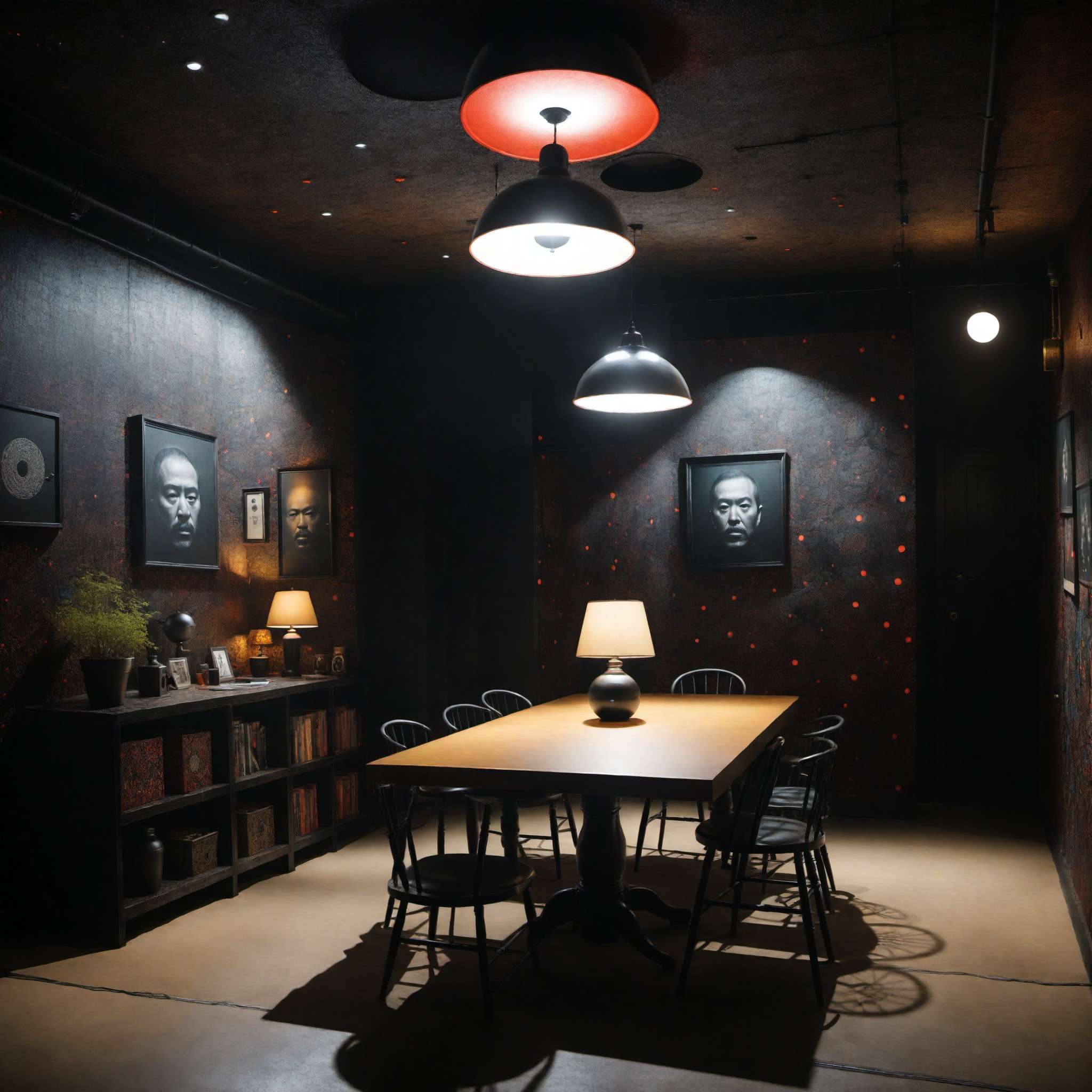
© Copyright , ZombieBunny.Org
The allure of escape rooms revisited
Escape rooms, like The Basement LA, offer an exhilarating blend of suspense, problem-solving, and teamwork. They encapsulate a unique form of entertainment that draws players into immersive narratives, challenges their minds, and fosters social bonds. But what is it about escape rooms that makes them so alluring?
The thrill of escape rooms often lies in their ability to transport us into another world. Through immersive storytelling, detailed set designs, and atmospheric sound and lighting effects, escape rooms create environments that captivate our senses and spark our imaginations. The excitement of delving into these worlds, unraveling their mysteries, and overcoming their challenges is an experience that few other forms of entertainment can match.
Furthermore, the puzzles in escape rooms engage our problem-solving skills and creativity in a fun and interactive way. The satisfaction of cracking a tough puzzle, the joy of discovery, and the adrenaline rush of racing against the clock are all part of the allure of escape rooms.
Finally, the social aspect of escape rooms is a significant draw. Working together as a team, communicating effectively, and sharing the thrill of escape deepen our social bonds and make the experience even more rewarding.
In essence, the allure of escape rooms lies in their unique combination of immersive storytelling, interactive problem-solving, and social interaction. They offer a thrilling, brain-teasing, and bond-forming adventure that leaves players eager for more. So, if you’re looking for an exciting and rewarding experience, why not embrace the excitement of escape rooms?
The transformative power of escape rooms
Escape rooms like The Basement LA have a transformative power that goes beyond mere entertainment. While they certainly provide a thrilling and fun experience, they also have the potential to foster personal growth, enhance social bonds, and even provide educational value.
Firstly, escape rooms challenge us on many levels. They test our problem-solving skills, creativity, and ability to work under pressure. Overcoming these challenges can boost our confidence, enhance our cognitive abilities, and even help us uncover hidden talents or interests. They provide a platform for personal growth and self-discovery, all while having fun.
Socially, escape rooms have the power to strengthen relationships. The collaborative nature of these games fosters communication, cooperation, and trust among team members. They can serve as a powerful team-building tool, enhancing social bonds and teaching valuable lessons about teamwork and conflict resolution.
Furthermore, escape rooms can be educational. They often incorporate elements of history, science, or culture into their narratives and puzzles, providing an engaging way to learn and explore new topics. Moreover, the skills required in escape rooms – such as critical thinking, attention to detail, and effective communication – are transferable to many real-life situations.
In essence, the transformative power of escape rooms lies in their ability to combine entertainment with personal growth, social connection, and learning. They offer a unique, immersive, and enriching experience that can have lasting benefits. So, embrace the excitement of escape rooms and discover their transformative power for yourself!
Invitation to experience The Basement LA
Experiencing the thrill of an escape room is something that truly needs to be felt firsthand, and The Basement LA is an ideal place to dive into this adventurous realm. As one of Los Angeles’ premier escape room venues, it offers a masterclass in suspense, creativity, and immersion that caters to both beginners and seasoned players.
At The Basement LA, every game is a journey into the chilling world of Edward Tandy, a cannibalistic serial killer with a penchant for puzzles. As you navigate through the intricate challenges and immerse yourself in the eerie atmosphere, you’ll experience the adrenaline rush that only a well-designed escape room can deliver.
With its carefully crafted puzzles, immersive storytelling, and high-end production values, The Basement LA offers an escape room experience that stands out from the crowd. Whether you’re a fan of horror, a puzzle enthusiast, or simply looking for a unique and exciting outing with friends, The Basement LA has something to offer.
Moreover, The Basement LA is more than just a game; it’s an opportunity to challenge yourself, bond with others, and expand your horizons. It’s a chance to step out of your comfort zone, flex your problem-solving muscles, and discover new aspects of your personality and abilities.
In essence, The Basement LA invites you to embrace the excitement of escape rooms. It offers a thrilling, brain-teasing, and memorable adventure that you won’t soon forget. So, gather your friends, muster your courage, and step into the world of Edward Tandy. Your adventure awaits!
Please support our site and purchase something from our store.







